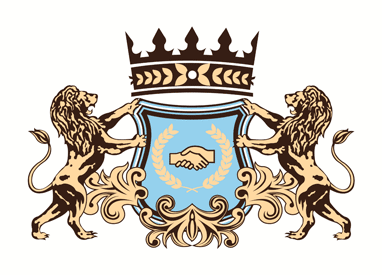- 93.6-96.1% gold recovery from leaching test on Kaaresselkä samples
- 94.2-99.9% gold recovery from leaching test on Aamurusko samples
- All samples demonstrate high recoveries confirming predominantly free-milling gold mineralization amenable to industry standard processing methods
- Drilling is ongoing at the Kaaresselkä area, on the wholly owned Risti property
ST. JOHN'S, NL, June 3, 2025 /CNW/ - Aurion Resources Ltd. (TSXV: AU) (OTCQX: AIRRF) ("Aurion" or the "Company") reports results for mineralogical and metallurgical test work on two samples from the Vanha prospect (Kaaresselkä) and two samples from the Aamurusko prospect, located within the wholly owned Risti property in the Central Lapland Greenstone Belt in northern Finland. Summary - Kaaresselkä (Vanha prospect) samples, bottle roll cyanidation leaching test work
- Sample 1 (KS22029), sample grade 4.39 g/t Au, gold recoveries 93.6-95.6%
- Sample 2 (KS23071), sample grade 6.76 g/t Au, gold recoveries 94.5-96.1%
- Aamurusko samples, bottle roll cyanidation leaching test work
- Sample 1 (AM19106), sample grade 2.03 g/t Au, gold recoveries 94.2-97.8%
- Sample 2 (AM19113), sample grade 15.24 g/t Au, gold recovery 99.9%
- All samples demonstrate high recoveries confirming predominantly free-milling gold mineralization amenable to industry standard processing methods
- Favorable liberation of gold grains at P80 75 µm grind size
- Drilling is ongoing at the Kaaresselkä area, on the wholly owned Risti property
- Targets include the Vanha prospect and the Kaares area
Comments
"The excellent results, with gold recoveries of 93.6-99.9%, from the initial mineralogical and metallurgical test work on the Risti samples confirm the presence of predominantly free-milling gold with favorable mineralogical and metallurgical characteristics for efficient processing using industry standard methods," commented Matti Talikka, Aurion's CEO. "The ongoing drilling program at Risti, with a focus on the Kaaresselkä area, is progressing well, and the results will be reported in due course." Test work result summary
The initial mineralogical and metallurgical test work on two samples from the Vanha prospect (Kaaresselkä) and two samples from the Aamurusko prospect, both located within the Risti property, provide valuable information on chemistry, mineralogy and leaching performance of the gold mineralization. The test work was performed at the Metso Research Center in Finland and SGS in South Africa. All samples demonstrate high recoveries (>93.6%) from bottle roll leaching tests, confirming predominantly free-milling gold (Table 1). Results indicate rapid leaching of gold with near maximum recoveries achieved in all samples after 10 hours of leaching time (total leaching test period 72 hours). A grind size of P80 75 µm provides favorable liberation of gold grains. The presence of coarser fractions of gold (>75 µm) suggests potential for gravity recovery methods. The test work results indicate the metallurgical viability of both prospects, with industry standard processing strategies adaptable to sample-specific mineralogy and gold distribution. Further test work is expected to provide more detailed information and an opportunity to enhance the metallurgical performance such as the optimization of the grind size and the amount of gold amenable for gravity recovery methods. Table 1. Results from bottle roll cyanidation leaching test work. | Sample | Head grade
g/t Au | Residue
g/t Au | Recovery
Au % | Kaaresselkä 1-A | 4.39 | 0.3 | 93.6 | Kaaresselkä 1-B | 4.39 | 0.2 | 95.6 | Kaaresselkä 2-A | 6.76 | 0.27 | 96.1 | Kaaresselkä 2-B | 6.76 | 0.38 | 94.5 | Aamurusko 1-A | 2.03 | 0.05 | 97.8 | Aamurusko 1-B | 2.03 | 0.12 | 94.2 | Aamurusko 2-A | 15.24 | 0.01 | 99.9 | Aamurusko 2-B | 15.24 | 0.01 | 99.9 |
Sample descriptions
Kaaresselkä sample 1
Composite sample with a head grade of 4.39 g/t Au from drill hole KS22029 located in the central part of the Vanha prospect. Sample represents mineralization associated with elevated sulfur content and presence of sulfide minerals, mainly pyrite and arsenopyrite. Two bottle roll cyanidation leaching tests returned recoveries of 93.6% and 95.6% with residues of 0.3 g/t Au and 0.2 g/t Au. Kaaresselkä sample 2
Composite sample with a head grade of 6.76 g/t Au from drill hole KS23071 located in the eastern part of the Vanha prospect. Sample represents mineralization with low-sulfur content and a very low amount of sulfide minerals. Two bottle roll cyanidation leaching tests returned recoveries of 96.1% and 94.5% with residues of 0.27 g/t Au and 0.38 g/t Au. Aamurusko sample 1
Composite sample with a head grade of 2.03 g/t Au from drill hole AM19106 located in the NW area of the Aamurusko prospect. Sample represents mineralization with a minor amount of sulfide minerals, mainly pyrite. Two bottle roll cyanidation leaching tests returned recoveries of 97.8% and 94.2% with residues of 0.05 g/t Au and 0.12 g/t Au. Aamurusko sample 2
Composite sample with a head grade of 15.24 g/t Au from drill hole AM19113 located in the Main area of the Aamurusko prospect. Sample represents mineralization with a trace amount of sulfide minerals, mainly pyrite. Two bottle roll cyanidation leaching tests returned recoveries of 99.9% and 99.9% with residues of 0.01 g/t Au and 0.01 g/t Au. Mineralogical characterization methodology
The drill core samples were homogenized and initially crushed to 100% passing 1 mm and screened into particle size fractions -20 µm, 20-45 µm, 45-75 µm, 75-106 µm and 106-150 µm. Chemical assays were conducted to determine elemental composition using standard geochemical methods. Automated Scanning Electron Microscope based mineralogical analysis, such as mineral liberation analysis was used for quantitative phase analysis and to assess mineral liberation. Gold grain identification and compositional analysis were carried out using backscatter electron imaging and Energy Dispersive Spectroscopy. Bottle roll leach testing methodology, quality control and assurance
Samples for bottle roll leach testing were prepared by transferring a representative weighed portion (approximately 500 g) into a 10-litre leach bottle. Tap water was added to establish a slurry density of approximately 20% w/w. Hydrated lime was then added to adjust the slurry pH to around 10.5, ensuring conditions suitable for cyanide leaching. The slurries were preconditioned for 2 hours before the addition of solid sodium cyanide to achieve an initial concentration of 3000 mg/L NaCN. This cyanide concentration was maintained throughout the leaching period to ensure consistent leaching conditions. During the leaching process, aliquots of the slurry were taken at intervals of 2, 5, 10, 24, and 48 hours for free cyanide measurement by titration, ensuring reagent levels remained within specifications. Each 50 ml aliquot removed was immediately replaced with an equal volume of 2 g/L NaCN solution to maintain constant slurry volume and reagent concentrations. The leach tests were terminated after 72 hours. At test completion, final pH and cyanide levels were measured. The slurry was filtered, and the solid residues were washed, dried, and subsampled for gold analysis. Final filtrates were titrated to determine residual cyanide and lime concentrations, allowing calculation of reagent consumption. Duplicate bottle roll tests were performed for each sample to ensure repeatability and reliability of results. Quality assurance and control procedures were rigorously applied throughout the bottle roll leach testing. Duplicate bottle roll tests were performed on each sample to ensure repeatability, with acceptable reproducibility defined as results within ±5%. Certified standard solutions and blanks were analyzed regularly to verify reagent purity and absence of contamination. All titrations for cyanide and lime concentration were calibrated against certified standards before and during the test sequence. Sample splits and aliquots were prepared using calibrated equipment to maintain representativeness. Final data were reviewed and validated by experience laboratory personnel to confirm consistency and accuracy prior to reporting. Fire assay methodology, quality control and assurance
Fire assay analysis was conducted by SGS South Africa, an internationally accredited laboratory operating under ISO/IEC 17025 standards. The laboratory follows globally recognized procedures for the accurate determination of gold content in geological samples. Samples were prepared by drying, pulverizing, and homogenizing to a nominal grain size of -75 μm, ensuring sample representativeness and analytical integrity. A 30 g aliquot of each pulverized sample was mixed with a carefully formulated flux and fused at approximately 1050°C in high-temperature fire assay crucibles. The resulting lead button was separated from the slag, then cupelled to remove lead, yielding a precious metal bead. This bead was digested in aqua regia, and gold content was determined by Atomic Absorption Spectroscopy (AAS) or Inductively Coupled Plasma Optical Emission Spectrometry (ICP-OES), depending on the expected concentration. SGS South Africa employs a comprehensive QA/QC protocol to ensure the reliability and accuracy of analytical results. Certified Reference Materials (CRMs) and internal laboratory standards are routinely included with each batch to verify analytical accuracy and precision. Laboratory duplicates are analyzed at a frequency of at least 10% to assess reproducibility. Analytical blanks are included in every batch to monitor and identify any potential contamination. Control charts are maintained and reviewed regularly to detect any instrumental drift or systematic bias. All equipment is calibrated and maintained according to international best practices, and the laboratory participates in ongoing proficiency testing. All analytical results are subjected to internal validation protocols before release, ensuring a high level of data quality, traceability, and confidence in the reported gold concentrations. This news release has been reviewed by Andrew Hussey, P.Geo., GIS Geologist and Database Manager for Aurion Resources, a Qualified Person as defined by National Instrument 43-101. For more information on these projects please visit our website at www.aurionresources.com. About Aurion Resources Ltd.
Aurion Resources Ltd. (Aurion) is a well-funded, Canadian exploration company listed on the TSX Venture Exchange (TSX-V: AU) and the OTCQX Best Market (OTCQX: AIRRF). Aurion's strategy is to generate or acquire early-stage precious metals exploration opportunities and advance them through direct exploration by our experienced team or by business partnerships and joint venture arrangements. Aurion's current focus is exploring on its Risti project, as well as advancing its joint venture properties with B2Gold Corp. and Kinross Gold in Finland. On behalf of the Board of Directors,
Matti Talikka, CEO Neither the TSX Venture Exchange nor its Regulation Services Provider (as that term is defined in the policies of the TSX Venture Exchange) accepts responsibility for the adequacy or accuracy of this release. SOURCE Aurion Resources Ltd. | 



















